The journey of the Osiris-Rex spacecraft to the asteroid Bennu will answer questions about the most distant past and our possible future
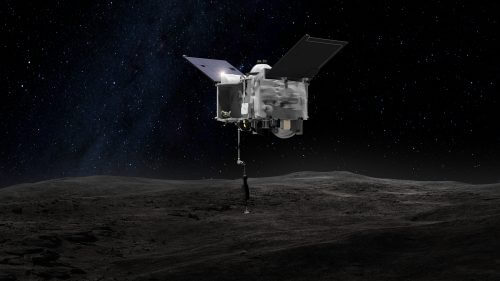
By Dante S. Loretta, The article is published with the approval of Scientific American Israel and the Ort Israel network 08.09.2016
- Asteroids are pristine remnants from the birth of the solar system. They can provide answers to open questions about the formation of the planets and perhaps even about the origin of life.
- Asteroids open up opportunities as well as dangers: they contain metals, water and organic compounds that can be exploited, but some of them could harm the Earth.
- Whether for science, security or profit, collecting samples from an asteroid and bringing them to our planet for further study is the next frontier in asteroid research.
In 1999 an asteroid was discovered which is probably the most dangerous to humanity. It moves through space in an unstable orbitBennu) named after one of the gods In the creation stories of ancient Egypt. Indeed, if this asteroid, full of organic compounds and water-rich minerals, had fallen on a barren world, it might have seeded it with life. Instead, he may be destined to cause great suffering and sow death. Astronomers estimate that in 2135, Bennu will pass by the Earth, closer than the Moon, in a way that may change its course and cause it to hit the Earth at the end of the 22nd century.
It is impossible to predict exactly where Benu might fall on Earth, but a simple calculation shows that its impact could release energy equivalent to an explosion of about 3,000 megaA ton of TNT. The world leaders will basically have two ways to prevent a disaster: evacuate large areas of the Earth, or send an expedition to divert the asteroid from its orbit. In order to estimate the size of the evacuation or the size of the diversion mission to Ashram, those future planners will have to rely, among other things, on data that will be collected more than a hundred years earlier, data that will be collected by a spacecraft launched by NASA in September 2016. The spacecraft OSIRIS-Rex, will visit Bennu with the aim of returning to Earth with samples from the asteroid.
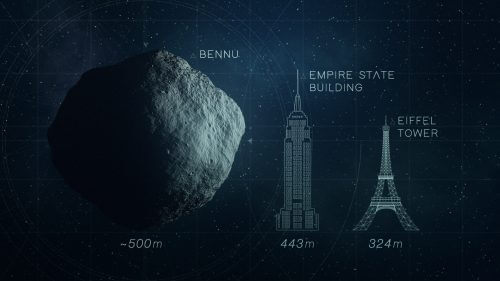
Origin of Osiris-Rex
The asteroids, leftovers from the formation of the solar system, are like messengers from the darkest shadows in our history. They carry with them information that cannot be obtained anywhere else about events that took place hundreds of millions of years before the geological inventory on Earth began to accumulate. Samples from the asteroid may be able to provide answers to open questions about the birth of the sun, the formation of the planets and even about the origin of life on Earth. Therefore, apart from the need to defend against catastrophic asteroid impacts, it is clear why scientists are interested in these objects.
What is less clear is why send a spacecraft on a round-trip mission to bring samples, since bits of asteroids, called meteorites, fall on Earth all the time. The problem is that there are very few, if any, virgin meteorites. All of them have to go through a hot entry into the Earth's atmosphere, which melts their surface, and most of them rest for years and hundreds and thousands of years before they are found. And during this time their untold stories slowly fade due to prolonged exposure to wind and rain. Most asteroids, on the other hand, are kept literally in stasis for billions of years in the depths of sterile space. The only way to access the information I will store in them is to reach them.
Bennu is an unusual asteroid. Most of the asteroid fragments that fill the world's museums are composed of rock and metal: materials durable enough to survive the fall to the ground. In contrast, benu is a coal-black mass of subtle organic compounds. Such carbon compounds may be the nucleus from which the carbon-based biochemistry of our planet evolved. Even if Bennu was dangerous, scientists would want to study him. But it is dangerous, and precisely because our son is getting dangerously close to our planet, the sampling mission is doable.
Bennu's story begins a billion years ago if not more, when he was born as a pile of gravel ejected fromPre-planet which wandered between Mars and Jupiter and shattered in the collision. The story of Osiris-Rex begins only in February 2004, in my third year as a junior lecturer, when I worked at LPL, Planets and Moon Laboratory of the University of Arizona. Lockheed-Martin Aerospace offered my supervisor, Michael J. Drake, to serve as lead researcher on a mission to retrieve asteroid samples that she planned to offer to NASA, and Drake offered me to serve as his deputy.
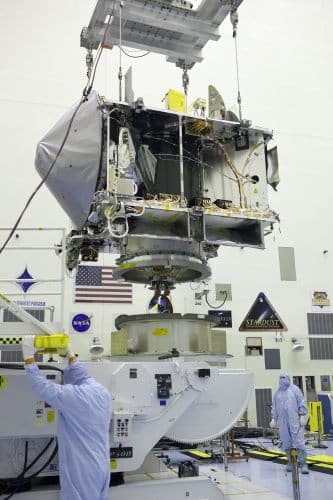
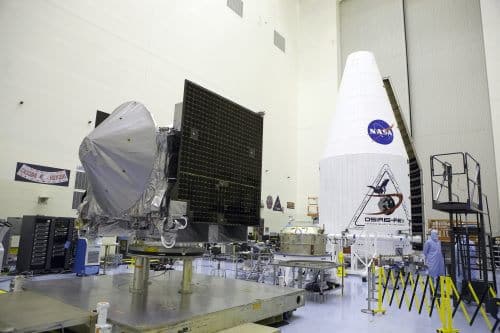
Initially, my work in the task was to define the scientific logic behind it. I had already studied meteorites more than a decade before, and I knew all the open questions related to them, and that only a sample of pristine material could provide an answer to them. In those days, there was only one project similar to ours: the spacecraft the boss of the Japanese space agency, which met the asteroid Itoqua to take samples from it in 2005. Yabusa's success was only partial. The spacecraft managed to collect 1,500 microscopic mineral grains, much less than planned. (It is difficult to collect samples from an asteroid!) Also, Itokawa is a bright and rocky object, and has a history very different from that of dark and carbonaceous asteroids such as Bennu, so its scientific potential was also very different from ours. We therefore paved a new path.
One evening, at my home, I decided to formulate in general terms the main scientific issues that the mission would deal with, and I wrote four words: source, spectroscopy, resources, security. Pristine samples from Bennu-type asteroids can tell us more about the origin of the planets and even life itself. A spectroscopic survey of the soil on its surface, called Regolit, you will increase the chance of obtaining a sample that will be useful for science and you can even find out if there are valuable resources in Benu that can be mined one day. The more we know about Bennu's trajectory, its composition and other characteristics, the easier it will be for us to know if it poses a danger to Earth, and how we can repel it. In a broader perspective, the reliable data from the "terrain" that will be provided by a space vehicle that will be sent to Bennu will allow us to locate and prevent possible flaws in telescopic observations and theoretical models, and improve studies of a wider variety of asteroids throughout the solar system.
These chapter heads ultimately defined the mission and were the basis forInitials the sophisticated and cool of her name [Osiris It is the name of the god of death in Egyptian mythology, and thus the name of the spacecraft is connected to the name of the asteroid it will explore - the editors]. On May 25, 2011, NASA selected Osiris-Rex for launch, and the team gathered to celebrate our success. Unfortunately, Drake died shortly thereafter, in September 2011. I replaced him and became the mission's Chief Scientist. The Osiris-Rex team is working day and night in memory of Mike, knowing that he would have been proud of us as we prepare to open a new frontier in science.
From the source of life to foreign economy
Osiris-Rex's journey began when the spacecraft was launched from Cape Canaveral, Florida on an Atlas rocket on September 5. The spacecraft will travel through the solar system for almost two years until it reaches Bennu in August 2018. Then it will circle the asteroid for more than three years and meticulously map it. In the end she will take a sample weighing at least 60 grams from him.
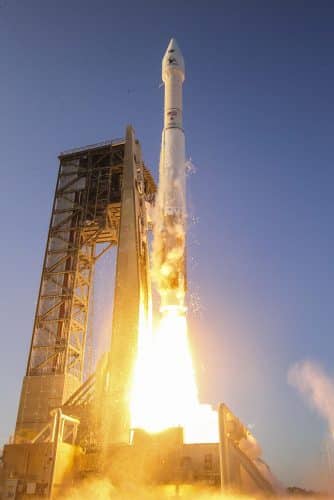
The samples that Osiris-Rex will bring will record a huge amount of time: from before the existence of the solar system until today. The oldest Bennu minerals would be "pre-solar" grains formed by solar winds blown from dying suns. Eventually these grains merged into our sun and its planets. Bennu's newest constituents will be minerals and compounds that have been altered by impacts from micrometeorites, cosmic rays, and solar flares. Osiris-Rex's study of these "space weathering" processes and their action on a carbonaceous asteroid would be unprecedented.
However, similar to other carbonaceous asteroids, most of the material in Bennu will be organic molecules and water-rich clay minerals, the same mixture that is hypothesized to have been the raw material from which DNA, RNA, proteins and other elements of life on Earth were formed. Some of the water in Bennu was once liquid, because it was heated in the heart of the asteroid by the radioactive decay of short-lived isotopes such as aluminum-26 and iron-60. Countless carbonaceous asteroids probably fell on the prebiological Earth. But here on Earth it is difficult to answer the question of whether these asteroids were the ones who concocted the recipe for life, because there are no old enough rocks left on our planet that have remained unchanged so that they could tell what happened.
Osiris-Rex is not only a mission to discover our ancient origin. It will also collect information that will be important for our future. Several commercial companies and countries are seriously considering asteroid mining as a solution to the limited resources on Earth and beyond. They are exploring ways to extract precious metals for use on Earth as well as using ice to produce rocket fuel in space. Due to Osiris-Rex's ability to precisely map the asteroid and maneuver around it, it will serve as a beacon for future asteroid mining missions.
The danger facing us
While improving predictions of asteroid impacts and methods to prevent them is not the mission's only goal, its value cannot be overstated. To determine if an asteroid will hit the Earth, its trajectory must be measured with masterful precision. To appreciate the difficulty involved, give your opinion on the distances and the forces involved. Bennu orbits the Sun every 1.2 years at an orbital speed of more than 28 kilometers per second and approaches Earth once every six years. In one revolution this asteroid travels more than a billion kilometers. At its furthest point from Earth, it is 340 million kilometers away from here.
Since Bennu regularly passes relatively close to Earth, astronomers were able to closely study its orbit, making it the most precisely documented asteroid on record. The margin of error in its semi-major axis estimate (half the distance between the two points furthest apart on the elliptical orbit) is only six meters out of 168,505,699.049 kilometers. This is equivalent to measuring the distance from New York to Los Angeles with an accuracy of about a third of a millimeter. But the accuracy of the trajectory alone is not enough, because there are many external forces that can change the trajectory of the asteroid in the future.
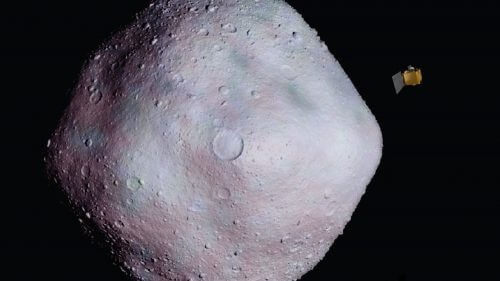
To chart Bennu's orbit, the Osiris-Rex team uses highly accurate models to calculate the effect of all these forces on the asteroid's orbit. These models must take into account the gravitational effects of the Sun, the Moon and the eight planets as well as those of other large asteroids and the dwarf planet Pluto. Even the flattening of the Earth has an effect because it generates considerable changes in the orbit of an asteroid passing near it. The models predict that in 2135 Bennu will pass at a distance of up to 300,000 kilometers from Earth. What will happen next is harder to predict. But one thing is certain: if Bennu passes in 2135 through one of several "keyhole" regions near Earth, the effects of gravity will change its course so that it will hit Earth near the end of the 22nd century.
We just don't know enough about Bennu to predict if he will actually go through one of those keyholes. Currently, our calculations show a one in 10,000 chance of hitting Earth in 2196. Summing up all the possible vulnerabilities in Israel yields an approximate chance of one in 2,700 between 2175 and 2196. But it seems that Bennu has as much chance of being ejected completely out of the inner regions of the solar system as it has a chance of hitting Earth. If these two things don't happen, it has almost equal chances of eventually falling into the Sun, or, slightly less likely, hitting Venus. Other possibilities, though much less likely, are that it will hit Mercury, Mars or Jupiter. Better models of Bennu's interior, its surface, and the forces affecting its orbit, which Osiris-Rex can provide, will allow us to improve the accuracy of our predictions.
But Osiris-Rex's greatest contribution to asteroid predictions will be the study of a recently discovered phenomenon: Yarkovsky effect. The effect deals with the forces acting on a small asteroid when it absorbs solar radiation and emits this energy as heat back into space. If this thermal radiation is not evenly distributed throughout the asteroid, it acts like a tiny propeller, causing the asteroid to drift and change its course over time. Asteroids my husband Prograde rotation (spinning from west to east like the earth) drift away from the sun as a result of this impulse. And asteroids have retrograde rotation, like his son, drift to her.
So far, we've already used ground-based and space-based telescopes to measure the Yarkovsky effect in Bennu, and found that its position has shifted more than 160 miles since its discovery in 1999. These measurements show that Bennu probably came out of the more distant regions of the asteroid belt, which lies between Mars and Jupiter, and migrated to where it is today. Unevenly distributed sunlight and thermal radiation can also affect the asteroid's spin, which nicely explains Bennu's circular spiral shape. This shape was obtained because the sunlight falls on its surface asymmetrically, which accelerates, over time, its rotation and constantly pushes material from the poles to its equator. This extensive exposure of layers of material caused by this, may have brought to the surface fresh material, which has not undergone weathering: ideal conditions for obtaining a pristine specimen.
Osiris-Rex will conduct a careful study of the Yarkovsky effect by measuring Bennu's spin, its surface area and the thermal radiation it emits. We will also directly measure Yarkovsky's acceleration over the entire session. This research will refine our theory regarding the Yarkovsky effect and will allow us to incorporate it into the estimates of the impact probability of any near-Earth asteroid. What's more, a better understanding of the Yarkovsky effect may be essential to future asteroid deflection missions, which could potentially use the effect to nudge the dangerous space rock into a different, less dangerous path.
The grand finale
From the beginning to the end, from the beginning of the project in the mid-2000s to its future end in the 20s and from there to the heritage of generations, Osiris-Rex will embody years of work and hundreds of millions of dollars of investment. All this effort and expense will amount to a record that will last only five seconds: a "touch and go" maneuver that the spacecraft will have to perform in order to take a sample from the asteroid's surface.
"In Benu, decades of effort will reach a climax that will last only five seconds: a "touch and go" maneuver to collect a sample from its surface."
Osiris-Rex will take the sample using a device known as a "touch-and-go sampling mechanism" (TAGSAM). The device consists of two main parts: a sampling head and an articulated positioning arm. To extract the sample material, the head will emit a jet of nitrogen gas that will suspend particles Regolit and push them into a collection chamber. The articulating arm will place the head in the collection position, bring it back for visual documentation, and place it in a metal capsule for return to Earth. For safety, 24 surface pads attached to TAGSAM's baseplate will pick up fine grains of material when they touch the asteroid's surface.
Most of Osiris-Rex's stay around Bennu, which will last three years, will be dedicated to preparing this last maneuver. With the help of cameras, laser devices, radio antennas and spectrometers, the spacecraft will carry out high-resolution global scans of the asteroid. From these scans, we will be able to compile a "treasure map", which will order a main site and a backup site for collecting the sample according to considerations of safety, the estimated ease of taking the sample and the estimated scientific value of the material to be collected. The safest areas to visit would probably be near the equator, where it would be easier for the spacecraft to adjust its speed to the asteroid's rotation speed in order to land on its surface. The sites with the highest scientific value are those that will contain a large variety of organic compounds, water-rich minerals and other materials that can help us find out whether asteroids contributed to the origin of life on Earth.
After the Osiris-Rex team selects the primary collection site and performs many dress rehearsals, the material collection maneuver itself will begin. So Bennu would certainly be on the far side of its orbit, more than 18 light minutes from Earth. After we send the command to perform the maneuver, all we have to do is sit and wait for the automatic process to take place. In a series of three jet blasts over several hours, Osiris-Rex will exit its orbit, position itself in front of its sampling site, and then slowly descend to the asteroid's surface. She will land on him at a speed of no more than 10 centimeters per second. TAGSAM will have five seconds until the vehicle takes off with a roar and rises to a height of about 10 kilometers above the asteroid. There he will conduct some checks and tests to make sure the sample was successful. TAGSAM contains enough nitrogen for three sampling attempts - after three disqualifications the game will be over.
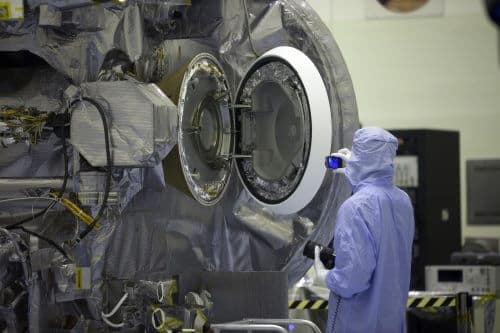
If all goes well, in 2021 the spacecraft will fire up its main engines and begin returning to Earth with the valuable sample. At the end of 2023, right after it ejects the metal capsule containing the sample into the Earth's atmosphere, Osiris-Rex will start its engines again and enter a safe and stable burial orbit around the Sun. The sample capsule will hit the atmosphere at a speed of more than 45,000 kilometers per hour. It will be protected by a heat shield that will discharge more than 99% of its input energy into the atmosphere. At a speed of three kilometers, the capsule will deploy a parachute that will slow it down to a soft landing in the "western desert" in Utah, a few years after it set out on its journey. A team of experts will extract the sample and bring it to NASA's Johnson Space Center for long-term storage and distribution, so that the world's scientists for generations can study it.
good to know
Overview of the Osiris-Rex mission
About the writers
Dante S. Loretta - Professor of Planetary Sciences at the University of Arizona. Among his main research topics are the formation of habitable planets and the likelihood of such planets being found elsewhere in the universe. He likes to ride mountain bikes with his family in the beautiful and natural landscape of the Sonora desert which he considers his home.
for further reading
- Meteorites and the Early Solar System II. Edited by Dante S. Lauretta and Harry Y. McSween. University of Arizona Press, 2006
- The OSIRIS-REx Target Asteroid (101955) Bennu: Constraints on Its Physical, Geological, and Dynamical Nature from Astronomical Observations. DS Lauretta et al. in Meteoritics & Planetary Science, Vol. 50, no. 4, pages 834–849; April 2015
- Home page of the author of the article, Dante Loretta
- Osiris-Rex mission home page
- The Mission: Pushing an Asteroid, Russell L. Schweikert, Edward T. Lu, Pete Hout and Clark R. Chapman, Scientific American Israel, February-March 2004
- Oceans from the sky, David Jewitt and Edward D. Young, Scientific American Israel, June-July 2015

One response
An incredibly wonderful subject to put up